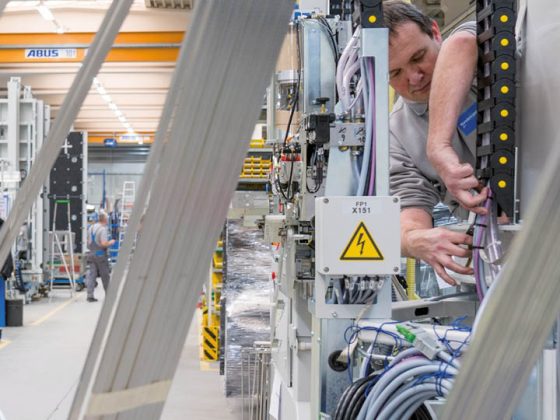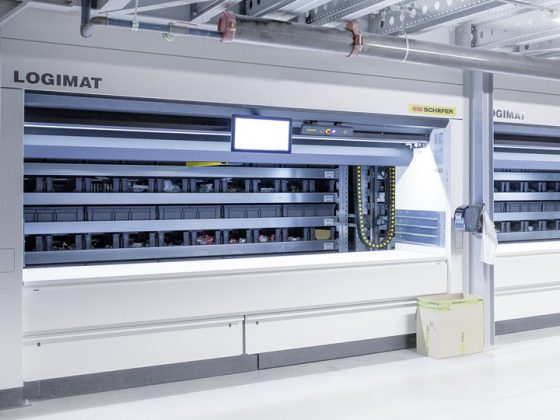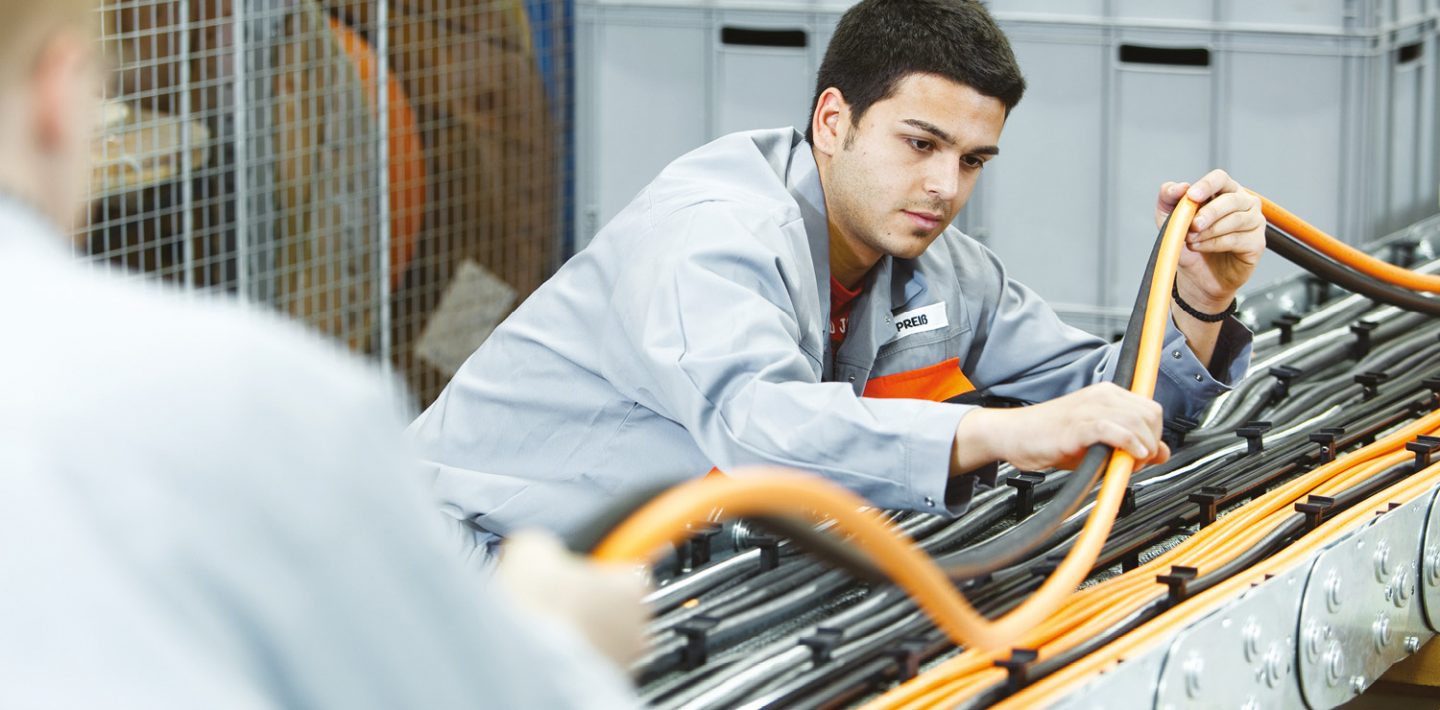
They look like elephants’ trunks or the roller track on an excavator. Wherever cables have to move, cable chains – also known as energy chains – are never far away. They safely transmit electrical energy, signals and data from one location to another, even when machine parts are moving at high speed. However, engineering a cable chain can cause a few headaches, as there are a lot of cable chain versions with a baffling number of assembly options – and unfortunately there are also lots of potential sources of errors. These errors can include choosing unsuitable materials, cables that are not designed to move millions of times or are not designed for small bending radii, or – taking the idea of “the bigger the better” to heart – installing cables that are actually too long for the cable chain. Care is also needed when choosing the cable chain itself. Not all applications can be covered with nylon cable chains. Where high temperatures occur – on electronic devices for example, steel variants or a combination of both materials are the better choice.
There’s a lot that can wrong when configuring a cable chain – but you can make sure you do everything right from the start by following the technical guidelines for cable chains from LAPP. Spanning over 40 pages, the guidelines contain everything you could possibly need to know about engineering and configuring cable chains. The first section teaches the user what types of cable chain are available and what they are useful for. Horizontal or vertical, self-supporting or sliding, lateral and comprising several layers or rotating — the geometric configurations are virtually limitless. There are also other aspects to consider, including reaction to fire, resistance to chemicals, UV resistance, explosion protection and clean room compatibility.
Download guideline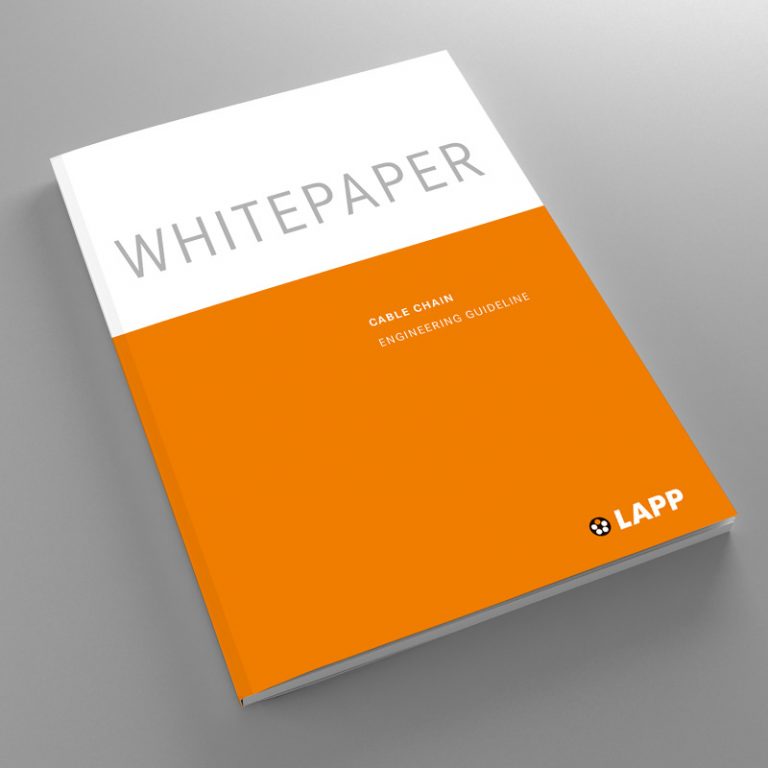
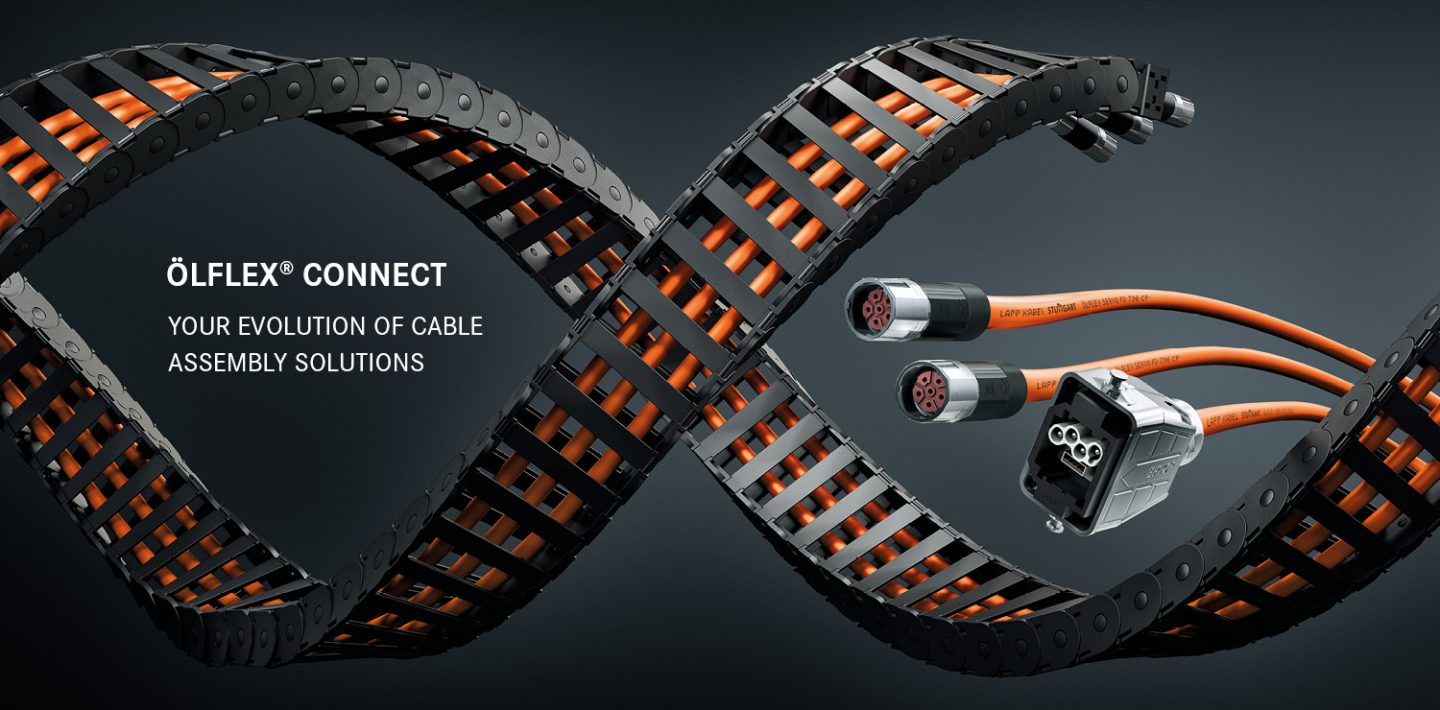
Find out more about ÖLFLEX® CONNECT CHAIN
Cable chain in eight steps
Section two deals with the engineering process. It guides the engineer from requirement to solution in eight steps:
| 1. | Choosing the right type of cable chain – The user gathers all of the requirements, including specifications of cables and hoses such as weight, outer diameter, sheathing and bending radius, as well as travelling distance, available space and assembly position of the connector elements. |
| 2. | Determining the required internal cross-section of the cable chain according to certain basic principles and adapting the result to the space available – For example, it is important to arrange the cables symmetrically and to use separating strips in a sensible way in order to prevent friction between cables and hoses with different sheath materials. |
| 3. | Choosing a cable chain that meets the requirements using the product selection table. |
| 4. | Determining the appropriate bending radius in accordance with all of the parameters of the cables and hoses used. |
| 5. | Calculating the necessary cable chain length depending on the range required – There are five different configurations, the values of which can be calculated from tables. |
| 6. | Calculating the self-supporting length in relation to an additional load. It is important to understand that an empty cable chain has a certain pre-tension and therefore curves outwards in order to compensate for the subsequent weight of the cables. |
| 7. | Double checking the type of cable chain chosen to ensure it meets the requirements identified. |
| 8. | Choosing additional components such as connector elements, internal division, shelves and locating channels, which are compatible with the type of cable chain selected. |
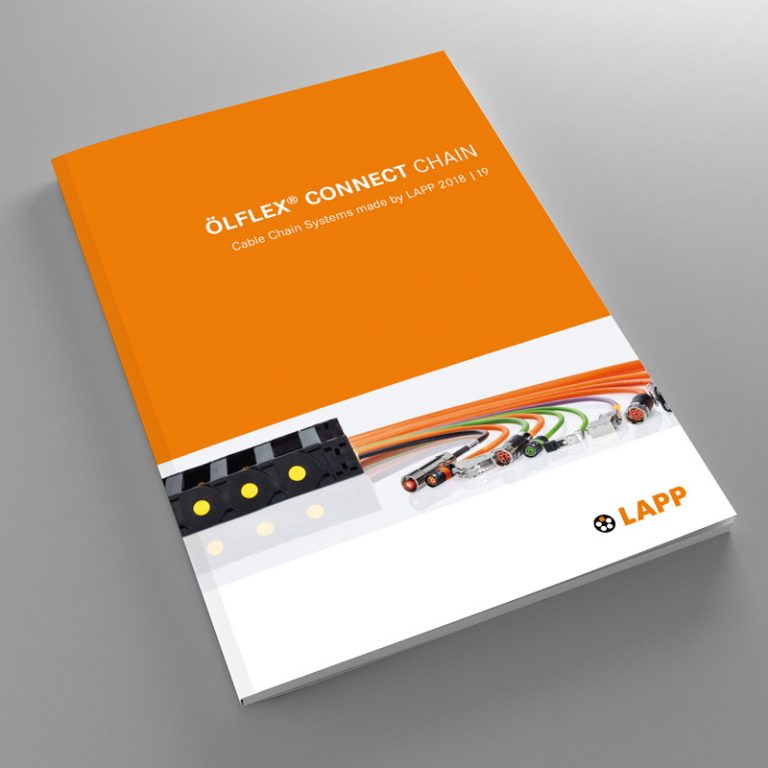
Easy thanks to plug and play
With so much cable chain knowledge, it’s important not to forget that: “The cable chain is there for the cable and not the other way around”, says Frantisek Omasta, Sales and Engineering Manager for LAPP Harnessing Solutions. Expert knowledge of cables is therefore just as important. LAPP is the world’s only provider of cable chains that manufactures cables themselves. This offers advantages for complex applications where standard cables are not an option and alternatives are needed. Users can find the appropriate products in the LAPP ÖLFLEX® CONNECT CHAIN catalogue – a second key source of information for cable chain engineering spanning almost 400 pages.
Download catalogueConfigurator
How to configure your cable chain online: Select the components according to your requirements. All sources of error are automatically excluded. Instead, your design is supplemented by the most suitable and reliable solutions.
To the configurator
If you’re still not confident with engineering a cable chain despite all the assistance available can get support from LAPP – as well as fully assembled premium quality cable chains delivered just in time. Install, secure the connectors and you’re done – it couldn’t be easier.
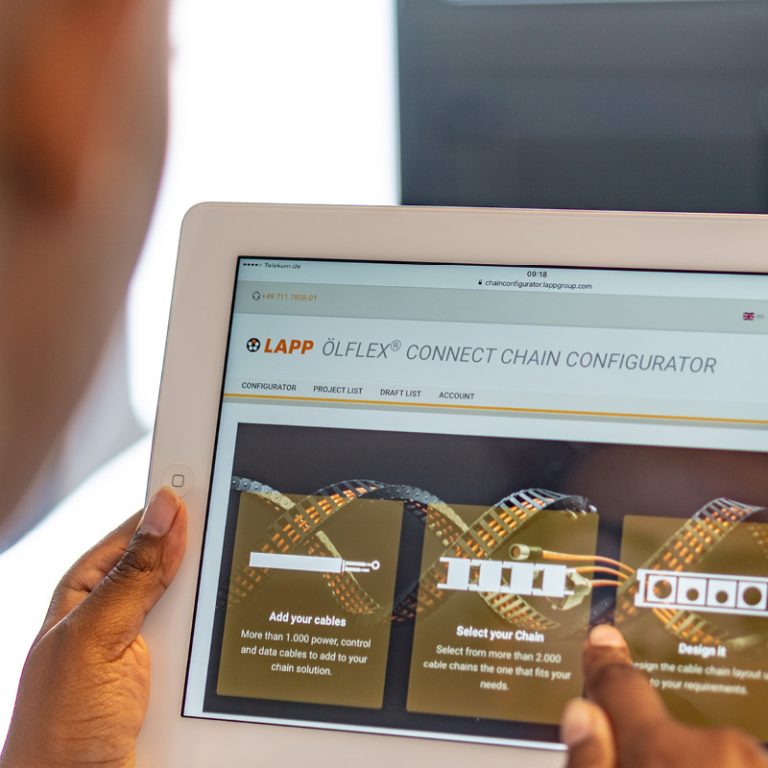
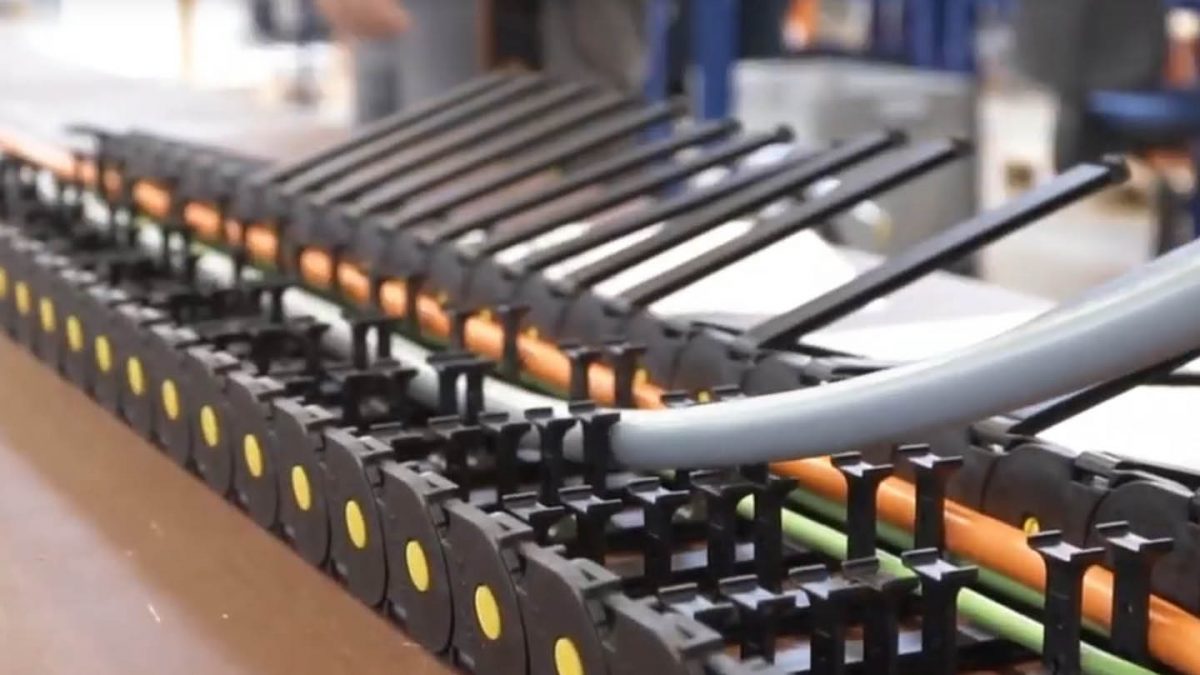
Video: ÖLFLEX® CONNECT CHAIN – Cable chain systems from LAPP

